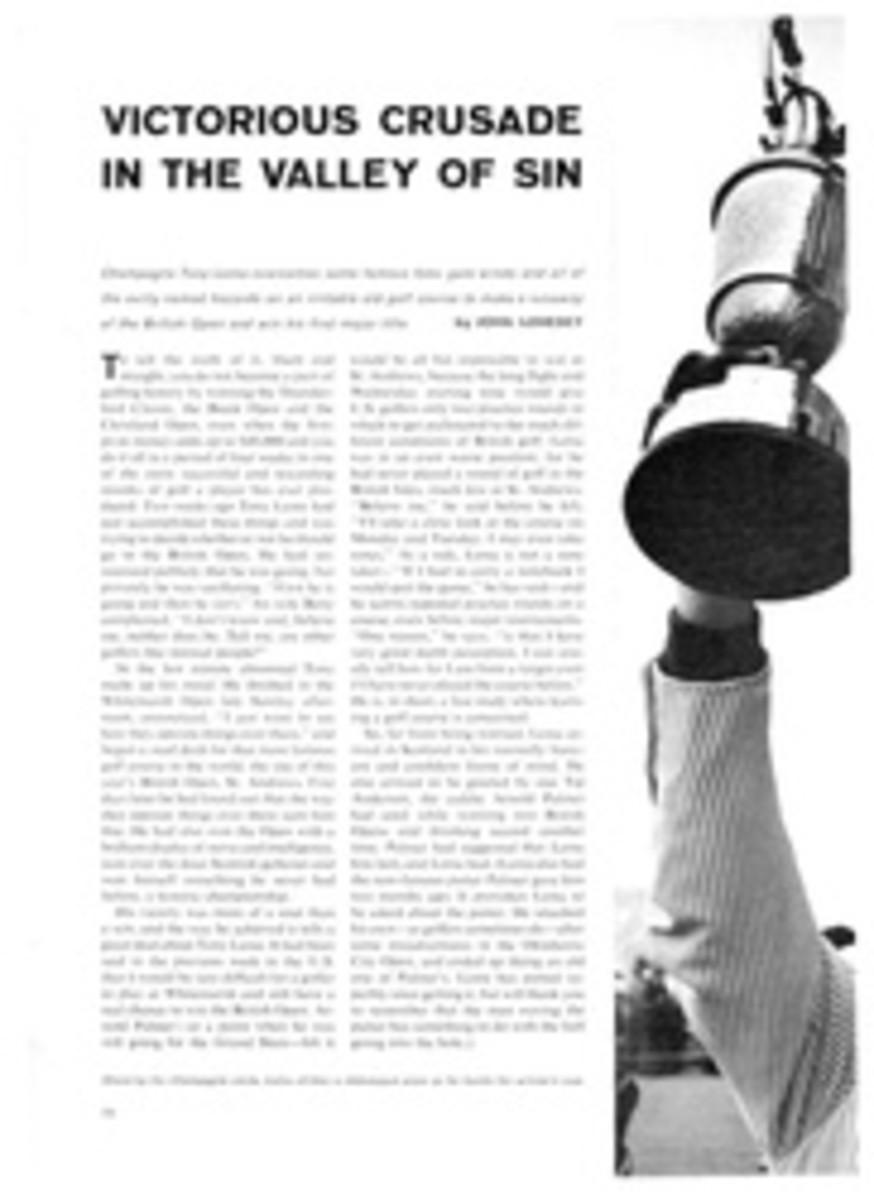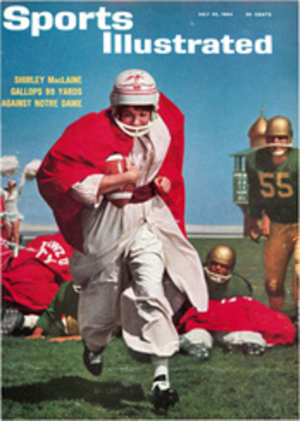
The high cost of not catching swordfish
At dawn the Atlantic off Montauk Point was as quiet as it ever becomes. Twenty-five of the finest sportfishing boats afloat cruised out of John Olin's modern, antiseptic Deep Sea Marina into a flawless morning and a level sea, conditions from which swordfishing dreams are spun. There were moments when you could see broadbills basking on the surface, with their sicklelike dorsal and caudal fins high above the swells—the sea was that smooth.
"Here is a tournament at the right time at the right spot!" read the tournament entry blank of the Deep Sea Anglers Club—fooling no one, since swordfishermen know better. The fish are usually somewhere in the area in early July, it is true, and the spot which the 32 anglers covered was a fairly large expanse of the offshore Atlantic. But there is a unique factor in angling for swordfish. There never has been the right time and the right spot. Back in 1913 William Boschen caught the first swordfish with a rod and reel off Catalina Island, California, and fewer than 1,500 have been taken in all the oceans in all the years since.
Meanwhile, however, the cost of equipment has steadily increased. When the 32 possessed and implacable anglers set out at dawn each day last week, each boat carried about $4,600 worth of tackle. Unlike marlin and sailfish, swordfish are rarely taken by skipping trolled baits. Instead, the rigged bait is kept in the ice chest until the fish is sighted. Then the bait must be presented with almost as much delicacy as a dry fly to a salmon in clear water. And even if the swordfish does strike, it almost always rolls in the bait and gets snagged, wrapping itself in the line and leader like a Christmas package.
To haul up from the depths a fish with an extraordinarily muscular body that is as limber as a fiber-glass vaulting pole is an artful operation, and no one wants to spoil it with a mechanical failure. To be on the safe side, a dedicated swordfisherman feels he should have on board at least four Fin-Nor reels, costing $400 to $700 each, and four fiber-glass trolling rods with aluminum roller guides at $250 each. Enough braided Dacron line to fill four reels (with four spools in reserve) costs $350. The swordfisherman also needs a fighting harness (another $100), several flying gaffs ($200) and terminal tackle—cable or wire leaders, stainless-steel hooks from Norway at $4 apiece and various snaps and swivels—amounting to at least $200. Bait, including squid and an assortment of eels, whiting, southern mullet, ling and mackerel for swordfish who do not like squid, comes to $20 a day.
All this is a good deal of expenditure in order to catch swordfish. More exactly, it is a lot to spend not catching swordfish, for the followers of this sport make a point of detailing exactly how many fish they do not catch. The alltime noncatching swordfish champion is Dr. John Staige Davis, a Manhattan physician. He has been fishing for broadbills for 34 years and has never boated one yet. "I have had fish right up to the boat before the hooks tore out, the line broke or sharks beat the gaff," says Dr. Davis, with remarkable equanimity. Once he gave up his chair to a novice angler who was suffering from a hangover. Minutes later the novice hooked his first broadbill, managed somehow to bring it to gaff and stumbled back down below to his bunk. That was about as close as Dr. Davis ever came.
He is, however, only a part-time, weekend fisherman. He estimates that in all his fruitless years at the sport he has spent 75 days or 600 hours at it, plus about $10,000. A full-time swordfishing safarist is his own outfitter. He keeps his boat loaded to the exhaust pipes with electronic gear—loran, depth recorder, fish-finding sonar, radar and ship-to-shore radio. Some of the 25 boats that set out last week were relatively simple, devoid of all showers, generators and fancy cabin furniture. Such, for instance, was Jack Rounick's Alligator, a 37-foot Merritt with twin Daytona engines rated at 380 horsepower and capable of 35 mph in mild seas. It must be considered a bargain at $60,000. A good deal slower, the Rhino is a luxurious 55-foot, $184,000 Rybovich. Complete with a carpeted saloon and a steward, with room enough for the captain's pet poodle to romp around the deck, the Rhino is owned by C. Dabney Thompson, a Cincinnati Cadillac dealer. The Nitso, roughly midway between the Alligator and the Rhino, is a 44-foot, $100,000 Rybovich, with air-conditioned living quarters. It is owned by Edward Gruber, a Pennsylvania underwear manufacturer and a fanatical fisherman whose broadbill record dates from 1956. His fellow fishermen regard Gruber's exploits in these eight past years with awe. In 174 days of fishing, he has sighted 261 broadbills, hooked 72 and boated 29.
All told, the boats in the tournament cost at least $1.5 million. The anglers and their well-trained, year-round crews spent some 600 hours at sea. They covered well over 7,500 miles of water from the Butterfish Hole southeast of Montauk Light to a Navy ammunition dumping ground some 60 miles off Martha's Vineyard. They found hundreds of sluggish blue sharks, several porpoises and one small ocean sunfish. But the odds against the angler boating a swordfish are long at the best of times. The ocean must be oily-slick so the angler can spot the broadbill basking on the surface—"high and dry" is the phrase used—or see one clipping along with its fins barely exposed. To find the long shadow of a swordfish below the surface, there must be sun but not too much glare. The water temperature should be at least 60° Fahrenheit. If and when a fish is sighted it must be coddled into taking the bait, and when hooked it will either break the leader or the line, or find some way to pull the hooks out of its mouth.
On the Nitso Ed Gruber baited one broadbill 15 times, offering it squid, then eel and mullet. The swordfish, a gourmet even among its kind, considered each delicacy, refused them all and swam leisurely away. Two days passed without a swordfish being boated. In all, 30 were sighted and four hooked in the three-day tournament.
"The ocean is all clotted up today," said James French Baldwin. "Eight years ago we could run all day and not see another boat. Now we even have to cope with Russian trawlers dragging off Martha's Vineyard and Nantucket." A New York metallurgist and an expert angler, Baldwin has won three swordfish tournaments in five years. He subscribes to a private weather service that he considers more accurate than the Weather Bureau. He also keeps a master chart, marked off in 20-square-mile sections, that lists precise loran readings for every broadbill sighted, baited, hooked and boated, as well as water temperatures, depth recordings, dates and times, baits used and weather conditions. None of it helped in this tournament.
Then on Sunday afternoon, three hours before the tournament ended, Jack Rounick in the Alligator sighted a swordfish off No Man's Land, a tiny island east of Martha's Vineyard. Strapping himself into his fighting chair, Rounick put his Fin-Nor reel on free spool and pulled off line as his captain delicately handed out a squid bait from the tuna tower. When the fish struck, Rounick engaged his drag and leaned back to drive the hooks home as the boat moved forward to take up the slack. The fish, like most broadbills, was foul-hooked—on the outside of the jaw and over one eye. It jumped 20 times, an unusual performance for broadbills, which normally sound and fight the hooks down deep.
The fight was memorable, if short, and when the fish was gaffed and slithered into the cockpit, Rounick blew the siren loudly and persistently, in a kind of swordfisherman's victory call. That evening at the dock the fish was hung on the scales. It weighed 164 pounds, a mere minnow of a swordfish (the average western Atlantic rod-and-reel swordfish weighs closer to 300 pounds). To get it, Rounick had covered nearly 900 miles of ocean in three days, burned some 650 gallons of marine fuel and, he calculated, put a $1,500 dent in his bank account.
A Manhattan knitting company executive who favors dashing silk ascots and hot-orange sweaters, Rounick is a relative newcomer to swordfishing. He has been so lucky that he is regarded as something of an upstart, compared to the aristocrats of swordfishing, like Dr. Davis, who have never caught a fish in decades of trying. Last year in one historic day Rounick hooked seven broadbills and boated three of them. How unusual that is may be seen from the four-year records of the Cuttyhunk swordfish tournament, which is held every August. Working from 310 boats, 620 anglers have fished a total of 19 days, or 35,340 hours, and have caught only 33 swordfish.
And their expenditures came to around $2.5 million. "I average 60 days of swordfishing a year," Rounick said, "and I figure it costs me $500 a day. Conservatively."
Conservatively, that is $30,000 a year, which is a good deal to pay for catching swordfish—or, as in the case of Rounick's tournament competitors, for not catching any.
PHOTO

